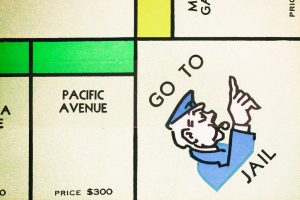
Author: Jarod Bona
I suspect that Antitrust DOJ head Makan Delrahim and I have had a similar reading list lately. And I am not even referring to any sort of antitrust books, like, for example, Steve Cernak’s book on Antitrust in Distribution and Franchising.
Let me explain.
I read, with great interest, a speech that Assistant Attorney General Makan Delraihim delivered on August 27, 2020 to the Conference on Innovation Economics in Evanston, Illinois (well, virtually).
His two topics were blockchain and Nassim Taleb’s concept of antifragility.
As a consistent reader of this blog, I trust that you already know that I am a big fan of Nassim Taleb and, particularly, his book, Antifragile: Things that Gain from Disorder. Indeed, a re-reading of Antifragile inspired an earlier article about Iatrogenics. If you haven’t read Antifragile, you should, right away.
My interest in blockchain, Bitcoin, and other cryptocurrency systems like Ethereum is relatively recent. But—like many before me—a little bit of knowledge has created an insatiable appetite for more. I am making my way down the rabbit hole, as they say.
Let’s dig in and talk about what the Department of Justice thinks about both antifragility and blockchain.
Antifragile
What does the term “antifragile” mean?
You might think that robust is the opposite of fragile. But those of us that have read Taleb know that isn’t true. Something that is fragile is likely to break or weaken from stress, shocks, or variability. If something is robust, it will resist this stress, shock, or variance.
But what you really want during times of stress (or, really, just over time), is antifragility. If you are antifragile, you improve from stress, shocks, and variance, which are inevitable, especially as time passes.
The human body is, in some ways, antifragile. Lifting weights, for example, creates a stressor on the muscles and surrounding tissues, which cause, ultimately, an increase in strength. So make sure you get your deadlifts in this week.
Antifragile is the opposite of fragile and it is better than robustness.
There is a lot more to antifragility than this. Indeed, there is an entire book about it (and, really, a set of books—Incerto). I urge you to read more—it might change your life.
Earnest Hemingway understood antifragility when he said in A Farewell to Arms that “the world breaks everyone and afterward many are strong at the broken places.” The next line is just as important for reasons you will understand if you read Antifragile: “But those that will not break it kills.”
So, what does antifragility have to do with the Department of Justice and antitrust?
Assistant Attorney General Makan, in his speech, emphasized that “the Antitrust Division has made protecting competition in order to advance innovation in the private sector one of our top priorities,” and that the Division wants to “ensure that antitrust law protects competition without standing as an impediment to rapid innovation.”
He then introduced the concept of antifragility and acknowledged that the pandemic can certainly be described as a “shock” producing a “wide array of trauma.” But with that harm comes an opportunity—“if we rise to the challenge of being antifragile, there is also an opportunity for tremendous growth.” More specifically, “[c]ritical innovations and technological developments often result from the kind of extraordinary experimentation the pandemic has made necessary. We have the opportunity to embrace antifragility, to delve into the experimentation and trial and error that drive growth, and to make ourselves better.”
According to AAG Makan, “[o]ur goal at the Antitrust Division is to extend the spirit of innovation beyond our latest efforts to combat the pandemic and protect competition—ultimately, to become antifragile.”
The market system—competition—is, of course, an antifragile system because it improves with variance over time, including shocks and stresses. As problems arise, the market provides solutions. As new preferences arise, the system meets those preferences. As demands for certain products or services decrease, resources move away from those areas. Indeed, the “heart of our national economy has long been faith in the value of competition.” And the purpose of the antitrust laws is to protect that competition.
I am pleased to read the DOJ Antitrust leader expressly affirm those values and I have no doubt that he believes them—you can’t read and quote Taleb and not be affected.
But let’s remember that large central government is not typically the friend of antifragility. Indeed, government interference is more likely to distort incentives and the market’s ability to adjust to stressors. It can also lock-up parts of the system and increase fragility.
When a knocking on your door is followed by a shout of “I am from the government and I am here to help,” your heart should feel fear not relief.
I view the antitrust laws, if applied with restraint, as similar to contract, property, and tort laws. They provide the rules of the game that allow the market to prosper. Failure to apply any of them uniformly or fairly harms the beneficial potential of markets and competition. But over-applying them does the same. Like much of life, sometimes the answer is complicated and doesn’t fit into a single tweet.
Government enforcers can, however, stay on the right track if they have in their mind the rule that doctors often forget: “First, do no harm.” Antitrust enforcement, like medical intervention, can be iatrogenic.
Blockchain, Bitcoin, and Cryptocurrency
The DOJ Antitrust Division’s attorneys have formally educated themselves on blockchain and other technologies. And, like me, once they started learning about it, they probably realized what a big deal it truly is.
My worry, frankly, is that the government is going to somehow screw it up.
Continue reading →
 The Antitrust Attorney Blog
The Antitrust Attorney Blog












